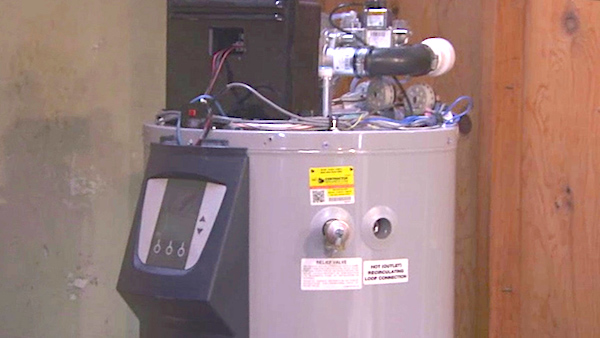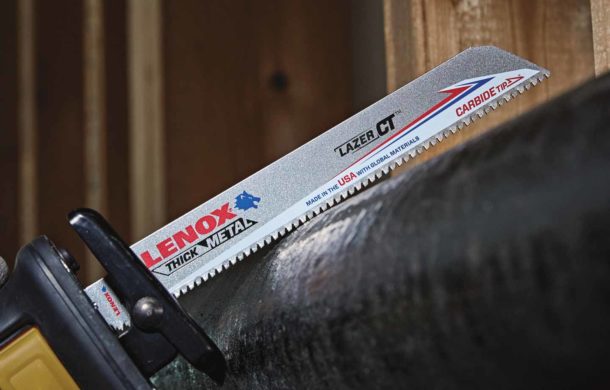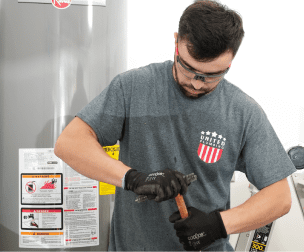Working in the construction business can be a very rewarding profession. However, it can be challenging to be your own boss and run your own business. You should always be looking for ways to improve and do better. The first step is to gather some ideas regarding enhancements you can make to managing your company Read more
Whats New

Working in the construction business can be a very rewarding profession. However, it can be challenging to be your own boss and run your own business.
You should always be looking for ways to improve and do better. The first step is to gather some ideas regarding enhancements you can make to managing your company. Here you can learn how to run a better construction business so you can find long-term success.

Set Company Goals
You should always know what you are working toward as a business owner. This entails coming up with company goals you can achieve. Consider both short-term and long-term objectives as you map out where you are heading. Work these goals into a written business plan that can act as your roadmap as you move forward. Now is a good time to figure out your niche and the types of services you want to provide. Keep in mind that you can always go back to the drawing board based on the results you are seeing. There may be opportunities to make tweaks or changes to your goals throughout your career.
Market Your Services
You also want to make sure you come up with a catchy name for your business and design a logo people will recognize. If you need help in this area then take the time to review some brand name types. This will help you come up with a name that people will come to know and recognize. You’re going to want to be proactive about marketing your services once you have these details mapped out. It’s wise to have a website that potential customers can visit and use to learn more about your business. You should make sure you have a strong online presence by launching a company blog and engaging on social media sites.
Hire Good Help
There is a lot of work that will need to be done on any given day. You are only one person and can only take on so many projects at once. Therefore, you’re going to want to make sure you hire a strong team of workers who will support you in reaching your goals. It may help to come up with a recruiting strategy so that you can attract top talent to your construction business. Make sure that you hold interviews and that the people you decide to hire are a good fit for your company culture. You’ll want people who you can rely on to work on projects when you can’t be on-site in person. Make sure that you invest in your workers by offering training to them when they start with your business and throughout the year.
Gather Feedback
You don’t know how you’re performing unless you ask. Run a better construction business by gathering feedback from workers and clients. You can use this feedback to help you make changes that will have a positive impact on your business. Avoid taking this feedback personally and use it to your advantage. It will help you to realize what you are doing well and identify areas for improvement. There are many different ways to gather insights from other people. For example, you can pick up the phone and have conversations with clients or send out surveys through email.
Build Your Network
You’re in the business of working on projects and building things but you’re also in the people business as a construction business owner. One way to get the message out about what you do is to build your network of connections. Now is also a good time to try to identify a mentor who you can bounce ideas off of. They can help guide you when you are feeling stuck or at a crossroads with your business. You never know who you are going to meet or run into that can help guide you in the right direction with your construction business. You may also want to make sure you are getting out in front of people in your community. It’s a great way to advertise your services and try to win over new customers.
Communicate Effectively
You also need to make sure you are communicating effectively as a construction business owner. It entails communicating with clients about their projects and the progress you’re making. You want to make sure you openly and honestly communicate about any delays or hiccups during any given construction project. It’s also important that you are available and responsive when your clients have questions or concerns. It’s your opportunity to offer excellent customer service and ensure that you and your clients are on the same page. You’re also going to be in charge of managing a team of workers. You need to be able to demonstrate strong leadership skills and build trust with your employees.
Educate Yourself on Industry Trends
The industry and market are always changing in the construction business. Therefore, you’ll want to make sure that you educate yourself and read up on industry trends. You need to be aware of the latest news and updates. This way you will be better equipped to offer insights and ideas to clients about what’s in and trending. It may be useful to set aside time every morning to read up on industry news and make sure that you are in the know about what the latest and greatest solutions are in your business. This way you will be more equipped to offer advice and input as to what your clients can choose from when it comes to materials and different looks.
Understand Your Equipment Needs
Even the best construction setup will struggle to get off the ground without an understanding of equipment needs. After all, spending too much, or too little on equipment can wreak havoc on productivity and profits. Getting equipment wrong can also compromise site safety. Obviously, there’s some construction equipment that you’ll know you need right off the bat, including everything from hard hats to new excavators. But, your equipment needs will likely also have to stretch beyond these basics with focuses that may include drones, safety harnesses, and a whole lot more. To start getting a grip on non-negotiable equipment, simply consider the tasks you intend to perform within your construction business, and the tools necessary to ensure you address those tasks with efficiency and safety in mind at all times.
Conclusion
These are some tips and ways for how you can run a better construction business. It will require putting forth an extra effort on your part if you’re going to succeed. Be patient with yourself because it can be challenging to adjust the way you operate your construction business initially. It won’t be long before you are seeing positive results from your hard work and efforts. Following this advice will also allow you to grow your business over time. This way you’ll be able to take on even more clients and secure a rewarding future for your construction business.

In the community of Pleasanton, the efficiency of household utilities, particularly hot water supply systems, significantly impacts daily life and comfort. Gas-powered units are essential in providing consistent hot water for various domestic tasks but require regular oversight to remain operational and safe. Understanding typical malfunctions can help homeowners decide when to seek repair services Read more
In the community of Pleasanton, the efficiency of household utilities, particularly hot water supply systems, significantly impacts daily life and comfort. Gas-powered units are essential in providing consistent hot water for various domestic tasks but require regular oversight to remain operational and safe. Understanding typical malfunctions can help homeowners decide when to seek repair services from experts like United Plumbing & Water Heaters.

Primary Concerns with Gas Water Heaters
Frequent Pilot Light Malfunctions
The most common issue faced by homeowners is problems with the pilot light, crucial for igniting the burner. If the appliance ceases to provide hot water, the pilot light’s failure might be due to several reasons including malfunctioning components or external factors. For residents encountering this problem, it is advisable to consult with gas water heater repair services in Pleasanton for a swift resolution.
Sediment Buildup Challenges
Over time, hard water can lead to the accumulation of minerals inside the tank, creating sediment deposits. This accumulation can severely affect the appliance’s efficiency and may cause it to overheat. Professional flushing and maintenance, provided by expert repair services in Pleasanton, can alleviate these issues and prolong the unit’s lifespan.
Additional Gas Water Heater Complications
Issues Stemming from Corrosion and Leaks
Corrosion within the tank or along the anode rod can lead to leaks, posing a significant risk to the property. Early detection and consultation with a repair service can prevent extensive damage and costly replacements.
Inefficiencies and Malfunctions Due to Faulty Pressure Relief Valves
The pressure relief valve is a safety feature designed to prevent the build-up of excessive pressure within the tank. Regular inspections and maintenance are vital to ensure this component functions correctly, safeguarding against potential hazards.
Disruptions Caused by Thermostat Failures
Inconsistent water temperatures can often be traced back to thermostat issues. A malfunctioning thermostat necessitates professional evaluation and, if necessary, replacement, to restore proper function and temperature regulation.
 Importance of Expert Repair Services for Gas Water Heaters in Pleasanton
Importance of Expert Repair Services for Gas Water Heaters in Pleasanton
The Advantages of Professional Intervention
Addressing gas system complications independently is risky due to the technical and safety challenges involved. Professional plumbers from United Plumbing & Water Heaters are equipped with the necessary tools and expertise to diagnose and rectify problems effectively, ensuring the safety and functionality of your system.
Long-Term Benefits of Regular Maintenance and Repairs
Engaging with professionals for routine maintenance or immediate repair services extends the life of your gas system, enhances safety, and ensures a consistent hot water supply. Regular check-ups can identify potential issues before they escalate, leading to cost savings and peace of mind for homeowners.
Why United Plumbing & Water Heaters Stands Out in San Jose
United Plumbing & Water Heaters is dedicated to providing San Jose residents with superior gas system repair and maintenance services. Our team’s commitment to quality and customer satisfaction, combined with our extensive experience, makes us the go-to choice for all plumbing needs.
Partner with United Plumbing & Water Heaters for Exceptional Gas Water Heater Solutions
Facing challenges with your gas system in Pleasanton? Don’t let these issues disrupt your daily routine. Reach out to United Plumbing & Water Heaters for reliable and efficient repair services. Our team is committed to ensuring your gas system operates smoothly, providing you with safe and consistent hot water. Contact us today to schedule a comprehensive service appointment and enjoy the benefits of a well-maintained gas water heater.
Addressing and maintaining the functionality of your home’s gas system is crucial for everyday comfort and safety. With expert guidance and support from United Plumbing & Water Heaters, you can ensure your Pleasanton residence remains a welcoming and warm environment. Reach out for our professional repair services and experience the difference that reliable and efficient plumbing solutions can make in your home.

Welcome to the future, where grease monkeys are going green, and the automotive world is buzzing with the sound of electric engines and the soft hum of eco-consciousness. Gone are the days when the only green thing in a mechanic’s shop was the can of spray paint used to mark out specific areas on the Read more
Welcome to the future, where grease monkeys are going green, and the automotive world is buzzing with the sound of electric engines and the soft hum of eco-consciousness. Gone are the days when the only green thing in a mechanic’s shop was the can of spray paint used to mark out specific areas on the shop floor. Today, it’s all about reducing carbon footprints, recycling like you’ve never recycled before, and making car parts that Mother Nature would be proud to have racing around. Now let’s take a closer look at some of these aspects that have been revolutionizing traditional trades.

The Green Shift
Picture this: a world where mechanics swap out their oil-stained overalls for a cleaner, greener apron. The rumble of V8 engines is being replaced by the whisper-quiet purr of electric vehicles (EVs). It’s not just about wielding wrenches anymore; it’s about plugging in diagnostics to software that sounds like it belongs in a spaceship. This isn’t just a technical upgrade; it’s a full-on environmental love affair, with mechanics leading the charge in a shiny, eco-friendly armor.
Sustainable Practices In The Workshop
Walk into any modern auto shop, and you might just miss the scent of gasoline and old tires. Why? Because these places are cleaning up their act—literally. We’re talking about recycling oil until it’s as good as new, lighting up the place with bulbs that barely sip electricity, and ditching those nasty solvent-based cleaners for something that won’t kill all the fish in the sea with just one drop. It’s not just about fixing cars; it’s about fixing the planet one oil change at a time. These changes, that haven’t yet been embraced by all, will eventually become the standard, setting a new norm for what it means to run an automotive workshop. The drive towards sustainability is not just a trend; it’s an evolution in the way mechanics and businesses view their impact on the environment.
The Role Of Green Technology In Parts Manufacturing
Remember when making car parts was about as eco-friendly as a coal mine? Well, those days are becoming more and more the end of an era. Enter the era of parts that come from materials you can actually pronounce and don’t spend the next millennium in a landfill. And let’s not forget the magic of 3D printing—creating only what you need, reducing waste to an absolute minimal amount, and making manufacturing look slick and smart. Besides 3D printing, manufacturing vehicle parts is also being revolutionized by the introduction of advanced materials like biocomposites and recycled metals, which are lighter, stronger, and more sustainable than ever before. This innovation extends to high-quality components, which are not only designed for durability and performance but are also developed with an eye towards reducing environmental impact.
The Impact Of Green Certifications
In a world obsessed with labels, green is the new black—green certifications, that is. They’re not just a pat on the back; they’re a gold star in the eco-friendly report card for businesses. These new standards and certifications tell customers, “Hey, we care about the planet as much as you do,” and that’s a powerful message for businesses to put out there. Plus, they’re like a magnet for eco-conscious consumers, drawing in people who want their car serviced with a side of environmental responsibility. It’s in these industries that consumers will be advised to replace car parts with newer, better quality parts to ensure sustainability is achieved—like replacing old rusty exhausts on cars with Cummins exhausts, known for their efficiency and outstanding quality. This move speaks volumes about a business’s commitment to the environment and also showcases a dedication to providing top-notch service with parts that are designed to last longer and perform better.
Renewable Energy In The Mix
Imagine a mechanic’s shop powered by the sun or wind. Sounds futuristic, right? But it’s happening right now. Solar panels and wind turbines are turning these places into mini power plants that don’t rely on the grid’s dirty energy. Companies that are making this new source of energy a priority will be the ones to take over the market in years to come. This switch to renewable energy isn’t just good for the earth; it’s a brilliant move for the wallet in the long run. And when the power they generate exceeds what they use, some shops are even feeding it back into the grid, turning a tidy profit while they’re at it. It’s a win-win-win: for the shop, the customers, and the big blue marble we all call home.
The Green Garage Makeover: Beyond The Cars
In the vibrant world of eco-friendly mechanics, the spotlight often shines brightest on electric cars and sustainable car parts. But let’s not forget about the stage itself—the garage. The green garage makeover is turning these traditional spaces into eco-havens. Picture solar panels on the roof, rainwater harvesting systems for washing cars, and walls insulated with recycled materials to keep the heat in and the carbon footprint small. It’s not just about what’s happening inside the garage; it’s about transforming the garage itself into a monument of sustainability. So, next time you see a mechanic’s shop, don’t be surprised if it looks more like a green oasis than a grease pit. These are, after all, the changes we all want to see.
Tech-Savvy Tools For A Sustainable Trade
Let’s dive into the toolbox of the future, where even the humblest of tools are getting a green-tech makeover. Imagine wrenches made from recycled metals, diagnostic equipment powered by solar energy, and apps that can optimize a vehicle’s performance for minimal environmental impact. These aren’t just tools; they’re the keys to a greener planet. Mechanics are now as likely to wield a tablet as they are a torque wrench, using technology to diagnose and fix not just the car in front of them but the bigger picture of automotive pollution. It’s a whole new world, where even the smallest screwdriver plays a role in the grand scheme of saving the planet.
The Role Of Technology And Innovation
Tech and innovation are the dynamic duo behind this eco-friendly transformation. Batteries are getting beefier without the bulk, materials are going on a diet to become lighter and more sustainable, and software is getting so smart it could probably fix a car while making you a cup of coffee (a bit extreme, but you get the picture). This tech isn’t just changing the game; it’s rewriting the rulebook on what it means to be a mechanic in the 21st century. In this high-tech saga, even the air compressors are getting an eco-makeover, becoming more energy-efficient and whisper-quiet, so they use less power and make less noise while keeping the workshop humming along smoothly.
Education And Training For A Green Future
The green revolution isn’t just happening in the shops and factories; it’s hitting the classrooms too. Future mechanics are getting a crash course in saving the planet, with textbooks that probably have more about electric vehicles and renewable energy than how to change oil. It’s a whole new world, where the tools of the trade aren’t just wrenches and screwdrivers, but also laptops and software that could probably explain to you how to launch a rocket. Furthermore, virtual reality (VR) training simulations are immersing students in lifelike repair scenarios without the carbon footprint, preparing them for a future where green is the norm.
Challenges And Opportunities Ahead
Let’s not sugarcoat it; going green isn’t a walk in the park. It’s more like a hike up a very steep, very expensive hill. But here’s the thing: the view from the top is so totally worth it. Yes, green tech can be pricey, and convincing everyone to jump on the bandwagon is a task that seems a little impossible right now. But the opportunities for innovation, for making a real difference, are as vast as the open road. Plus, with each challenge overcome, the industry paves the way for new solutions that make sustainability not just an option but a competitive advantage in the market.
The Unexpected Twist In The Green Revolution
In this eco-friendly saga, there are some unexpected twists worth mentioning. Take, for example, the humble tire. Once a symbol of rubber-burning excess, tires are getting a green makeover, with companies producing them from sustainable materials and designing them to last longer and roll smoother, slashing fuel consumption like a hot knife through butter. Then there’s the magic of the rise of biofuels and synthetic lubricants derived from renewable resources. Biofuels made from agricultural waste or algae, are reducing our reliance on fossil fuels, while synthetic lubricants, engineered from plant-based materials, are providing a high-performance alternative to their petroleum-based counterparts, reducing harmful emissions and extending the life of engine parts. This unexpected twist in the green revolution is a testament to human ingenuity and our ability to turn even the most mundane aspects of automotive maintenance into opportunities for environmental stewardship.
Final Thoughts On The Topic
So, there you have it, a glimpse into the not-so-distant future where mechanics are more likely to lecture you on the benefits of electric over diesel than try to sell you an air freshener. It’s a world where car parts are as much about performance as they are about protecting the planet, and where being a mechanic means being on the front lines of the environmental revolution. Sure, the road to a fully green automotive industry is filled with potholes and speed bumps, but with a bit of creative thinking, a dash of innovation, and a whole lot of dedication, it’s a journey well worth taking.

There’s much to love about being a contractor, but as with all career choices, there are challenges. It’s a competitive market and it can often feel like contractors have to juggle a million tasks just to keep their heads above water. Yet, while there’s no way to make life as a contractor a walk in Read more
There’s much to love about being a contractor, but as with all career choices, there are challenges. It’s a competitive market and it can often feel like contractors have to juggle a million tasks just to keep their heads above water. Yet, while there’s no way to make life as a contractor a walk in the park, there are certain things you can do that’ll help to make your life easier.
We’ll take a look at some handy tips for doing just that in this post. Take them all on board, and you’ll find that your operations run more smoothly than ever before.

Outsource Admin Tasks
There are some tasks that you’ll have to do yourself, but there will likely be plenty that you can hand over to someone else. In many cases, it’s just not a good use of your time to work on time-consuming or complex admin tasks. It’ll be better to give those jobs to someone else, so you can spend your time on value-adding tasks that help to push your business forward.
It’s especially recommended to outsource your financial admin tasks to someone else. They’ll have the expertise to make financial insights that can help with the longevity of your business.
Form Long-Lasting Relationships
While you may be a sole contractor, it’s unlikely that you ever really work alone. You’ll likely hire others to work on jobs with you either directly or indirectly. You can make your life a lot easier by forming long-lasting relationships with other contractors. Over time, you’ll find that you’ve naturally developed a network of other skilled workers who you trust, which can help massively when it comes to working on projects. Rather than having to find new faces all the time, you’ll have a go-to selection of quality, skilled workers to call upon.
Keep Up to Date With the Industry
It doesn’t matter what sector you operate in; it’ll always be evolving and developing. The best, most successful contractors move with the times and always have their finger on the pulse of what’s happening in the industry. Spending some time keeping up to date with what’s going on in all aspects of your work will help you deliver industry-leading services that impact your long-term success. The precise content you read will depend on your sector; if you deal with molded plastics, then reading the media room page of a plastic injection molding company is recommended. If you deal with eco-friendly practices, then attending environmentally-focused trade shows will be beneficial. As with all things, the more you know, the better you’ll be.
Invest In Your Reputation
Finally, be sure to spend at least time working on developing and maintaining your reputation. In a hyper-competitive climate, your reputation can be the difference between getting a job and not getting a job. While your reputation may develop on its own, it’s best to actively nurture it by providing excellent service, having a well-managed and up to date website, and investing in your social media presence.

When you do business, you know that you need to invest in the right equipment for the job. Typically, when it comes to business operations, the focus on having the right tools for the job often centers around large-scale equipment and machinery. There is no denying that deploying the wrong machinery for the job could Read more
When you do business, you know that you need to invest in the right equipment for the job. Typically, when it comes to business operations, the focus on having the right tools for the job often centers around large-scale equipment and machinery. There is no denying that deploying the wrong machinery for the job could have devastating effects, ranging from dramatic work injuries to significant financial loss for the business. But, tools come in a variety of sizes, and businesses that only consider large machinery may be missing out on the role of smaller items.
Indeed, the significance of smaller tools should not be underestimated. From bearings to office stationery and standard everyday communication tools, these seemingly minor components play a pivotal role in shaping efficiency, productivity, and overall success. What could happen when you are using the wrong small tools?
While businesses prioritize investments in large machinery and equipment, the role of smaller tools is often overlooked. These are often at the core of every activity, and while they may not be prominently visible, they are nonetheless crucial to all business operations.

Risk of using ineffective bearings, screws, and nails
In the manufacturing sector, the significance of quality bearings, screws, and nails cannot be overstated. Using subpar or inappropriate components can lead to a cascade of problems, including breakage, delays in production, and high repair or replacement costs. A single faulty bearing can halt an entire assembly line, resulting in significant financial losses and reputational damage.
So, business operations need to be able to rely on a trustworthy bearing manufacturer, nail and screw specialist, etc.
Mitigating risks with quality stationery
Pens and paper tend to be in every job, regardless of the kind of business you run. Even contractors and manufacturers will need to write down notes, ideas, and plans using pens and paper.
So why is it that in the office environment, the impact of small tools like pens and notebooks is often underestimated? Indeed, using ineffective stationery can lead to frustration among employees and a drop in productivity.
Pens with dried-out ink or low-quality paper notebooks can impede workflow and hinder creativity.
Additionally, providing employees with quality stationery demonstrates a commitment to their well-being and fosters a sense of value within the organization.
Ensuring efficient communication tools
Effective communication is the lifeblood of any business. Tools such as mailboxes and MS Office solutions are generally a standard of most businesses. You may not realize how damaging poor communication tools can be. Outdated mailbox systems and software can hinder collaboration and productivity. Besides, they could fail to meet modern needs.
So, it is worth Investing in updated communication tools such as updated email systems and collaborative software. This will not only streamline operations but also enable businesses to adapt to contemporary market challenges. It’s not a case of getting sophisticated technology to your business, but simply meeting the basic requirements of administrative tasks in 2024.
In the pursuit of business excellence, the focus often falls on large-scale investments in machinery and equipment. However, the importance of small tools should not be overlooked. From bearings and stationery to communication tools, these seemingly minor components play a crucial role in enhancing efficiency, productivity, and overall success.

 Importance of Expert Repair Services for Gas Water Heaters in Pleasanton
Importance of Expert Repair Services for Gas Water Heaters in Pleasanton